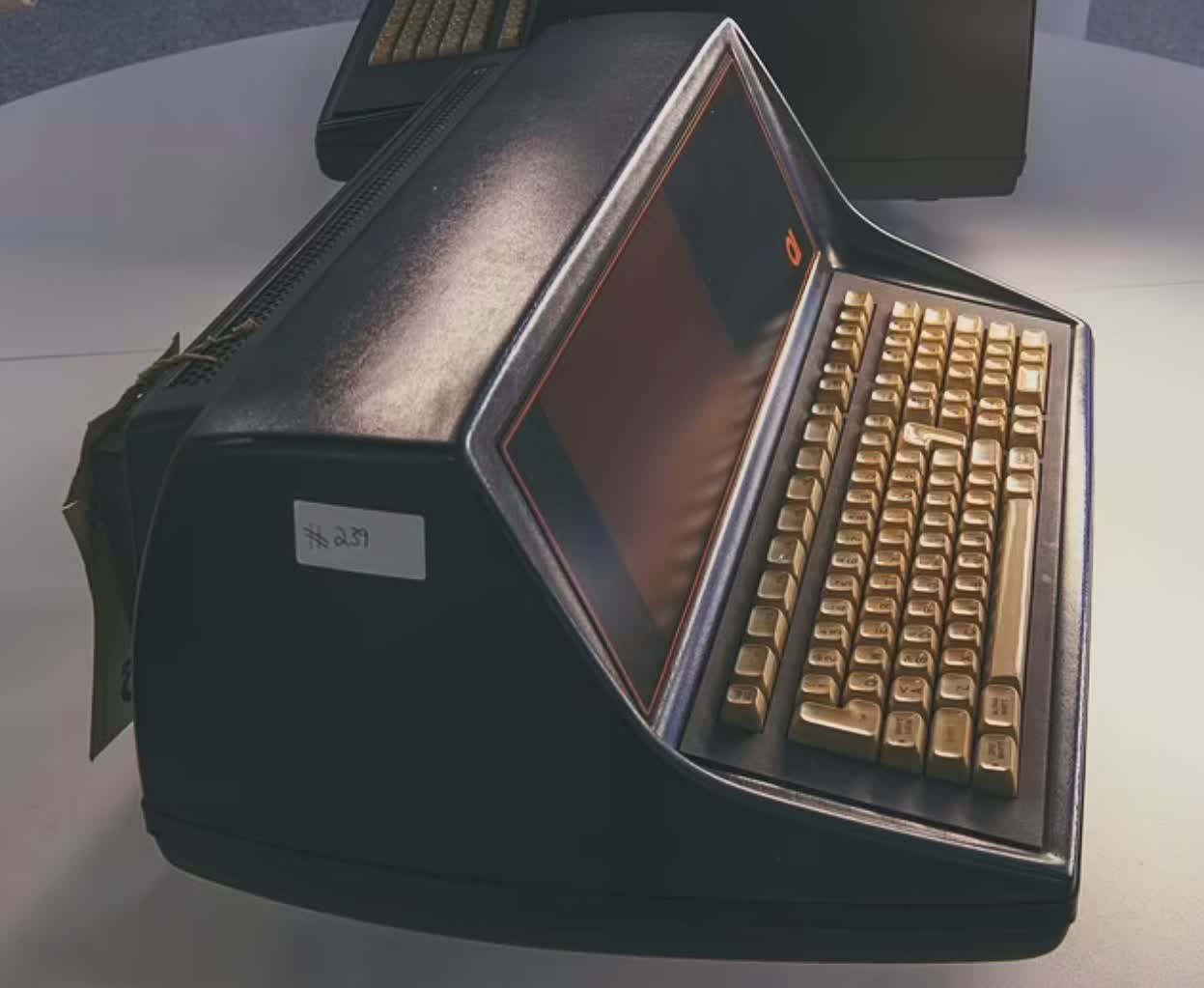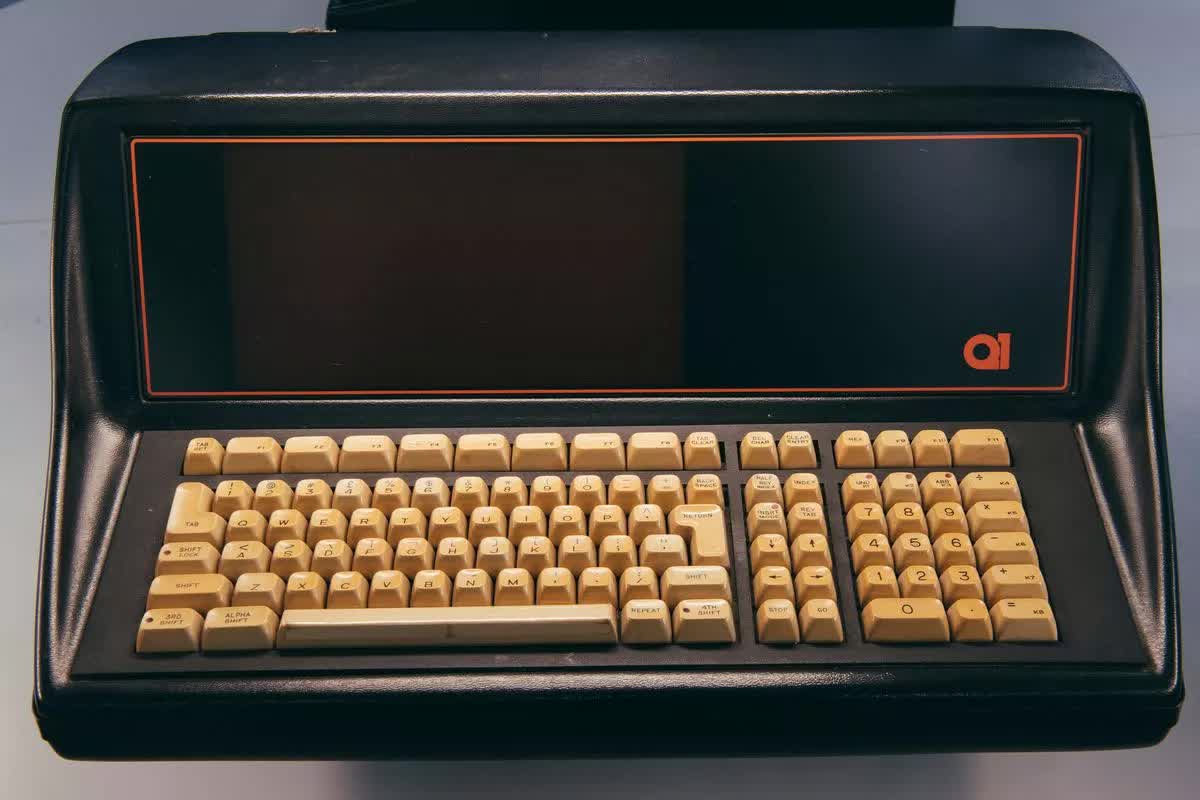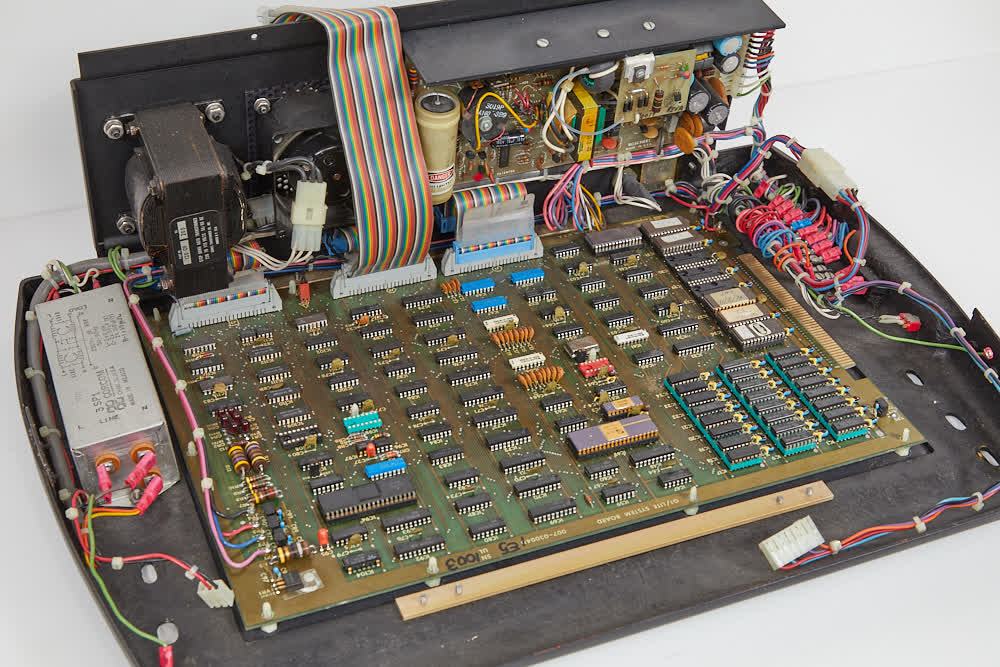In a nutshell: Even in this connected era where anything of value already seems to be on eBay, amazing discoveries are being made. In London, a routine house cleaning by a waste company uncovered two of the world's first desktop PCs, released back in the early 1970s, of which only three are known to still exist today.
The employees of house clearance service 'Just Clear' were unsure what they had found when uncovering two ancient computers hidden under boxes in a London home. Rather than sending them to be disposed of, the company held onto the computers so the devices could be evaluated by experts – online searches for information proved fruitless.
It was confirmed that the computers were the Q1 PC, the world's first desktop PCs featuring a fully integrated single-chip microprocessor. Released by the Q1 Corporation in 1972, the computer has a flat-panel neon-orange plasma display and uses an Intel 8008 8-bit CPU, which was capable of addressing 16KB of memory with a maximum clock speed of 800 kHz.
The 8008 architecture was designed by Computer Terminal Corporation (CTC) and implemented and manufactured by Intel. It was originally designed to be used in CTC's Datapoint 2200 programmable terminal, but an agreement between CTC and Intel permitted the latter to market the chip to other customers after Seiko expressed an interest in using it for a calculator. In addition to the Q1, the 8008 was used in the US SCELBI kit and the pre-built French Micral N and Canadian MCM/70.
Also see: Die photos and analysis of the revolutionary 8008 microprocessor
What makes the recent discovery even more surprising is that only a few Q1 PCs were ever brought over to the UK, and only three are known to exist in the world today. The two computers were put on show at a technology exhibition at Kingston University in Surrey, which ended on Saturday.
Just Clear's boss Brendan O'Shea said (via The Mirror), "Our teams find all sorts of things while clearing houses on a daily basis, some with historical significance, but never did I imagine that we'd find something so important to the field of technology and the history of computing."
"Occasionally, we encounter items deemed important enough to preserve and archive for the future in an auction sale or, in this case, an exhibition. I'm told that these models are extremely rare, so to find a pair of them is beyond exciting," he added.
It's expected that both the Q1 machines will now be placed for auction or sold to a private buyer. No word on how much they might go for, but a 1979 edition of the Association of Computer Users' Benchmark Report notes that a Q1 sold for $20,500 at the time, which would be about $87,000 today.


